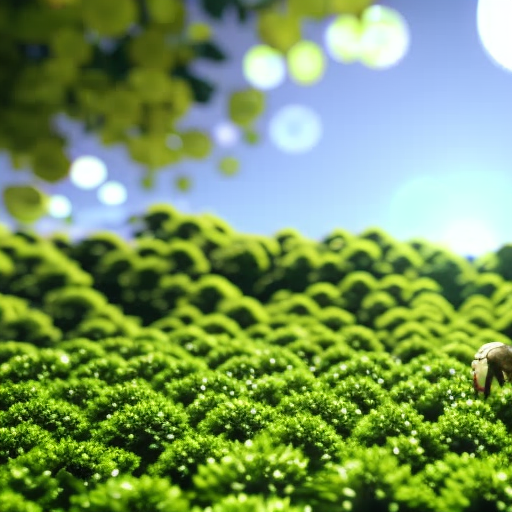Using biodiversity net gain for sustainable development
Using biodiversity net gain for sustainable development Sustainability Magazine


Sustainable Development Goals (SDGs) and Biodiversity Net Gain

Introduction
The loss of biodiversity has significant implications for human well-being, including impacts on food security, water quality, and the provision of ecosystem services such as pollination and climate regulation. Over half of the world’s GDP is directly dependent on nature assets. In 2021, the Dasgupta Review on the Economics of Biodiversity highlighted the link between economic stability and maintaining natural environments. This was followed by the establishment of the Taskforce on Nature-related Financial Disclosures (TNFD), showing the growing focus on nature in businesses.
What is a Biodiversity Net Gain Approach?
A biodiversity net gain approach involves increasing the biodiversity value of a site through development. This requires a biodiversity assessment before and after development using a metric called “biodiversity units” to measure the negative impacts on habitats. The aim is to deliver a sufficient net gain by creating new or restored habitats.
BNG Hierarchy
- Avoid: Retaining habitats with low ecological value.
- Minimise: Redesigning development to limit land take from natural habitats.
- Restoration: Improving the condition of on-site habitat.
- Offset/Compensate: Delivering additional biodiversity enhancements elsewhere to compensate for residual impacts.
BNG: Built Environment Action Plan
For those in the built environment, a three-step plan is recommended for implementing biodiversity net gain:
Step 1: Be Prepared
Landowners, managers, and developers need to prepare for the BNG planning requirement, which will take effect this year. Smaller sites have until April 2024 to comply.
Step 2: Understand Urban Considerations
Urban environments face unique challenges in achieving biodiversity net gain due to limited space for habitat creation. Compensation for biodiversity loss should be done as close to the site as possible. If not viable, distant land plots can be considered through the purchase of biodiversity units. Developers may also need to purchase statutory credits from the government as a last resort.
Step 3: Plan in Advance
The construction industry needs to incorporate biodiversity considerations into development plans from the start. This could involve measures such as green roofs, tree planting, and creating new habitats for wildlife. Developers should be prepared for financial implications as they will need to fund biodiversity enhancements as part of their planning obligations.
Conclusion
Biodiversity is an important aspect of achieving sustainable development. Planning for future governance and understanding the cost and time impact will be essential to avoid future costs and implications. By incorporating biodiversity net gain into development practices, we can create thriving environmental and economic communities for tomorrow.
About the RLB
The RLB Sustainability team offers solution-led services including BNG assessment and compliance, BNG credit and strategy advisory, Natural Capital framework and Risk and Impact assessments, Green Ecosystems services assessment, Natural capital assessments, and Nature finance vehicle development.
SDGs, Targets, and Indicators
1. Which SDGs are addressed or connected to the issues highlighted in the article?
- SDG 15: Life on Land
- SDG 8: Decent Work and Economic Growth
The article discusses the loss of biodiversity and its implications for human well-being, food security, water quality, and ecosystem services. This aligns with SDG 15, which aims to protect, restore, and promote sustainable use of terrestrial ecosystems, halt biodiversity loss, and prevent the extinction of threatened species. Additionally, the article mentions that over half of the world’s GDP is directly dependent on nature assets, highlighting the connection between economic stability and maintaining natural environments, which relates to SDG 8.
2. What specific targets under those SDGs can be identified based on the article’s content?
- SDG 15.5: Take urgent and significant action to reduce the degradation of natural habitats, halt the loss of biodiversity, and protect and prevent the extinction of threatened species.
- SDG 8.4: Improve progressively, through 2030, global resource efficiency in consumption and production and endeavor to decouple economic growth from environmental degradation.
The article emphasizes the need for a biodiversity net gain approach to increase the biodiversity value of a site and mitigate the negative impacts of development on habitats. This aligns with SDG 15.5, which focuses on reducing habitat degradation, halting biodiversity loss, and protecting threatened species. Additionally, the article highlights the economic dependence on nature assets and the need to incorporate biodiversity considerations into development plans. This relates to SDG 8.4, which aims to improve resource efficiency and decouple economic growth from environmental degradation.
3. Are there any indicators mentioned or implied in the article that can be used to measure progress towards the identified targets?
- Indicator for SDG 15.5: Proportion of important sites for terrestrial and freshwater biodiversity that are covered by protected areas, by ecosystem type.
- Indicator for SDG 8.4: Material footprint, material footprint per capita, and material footprint per GDP.
The article mentions the need to increase the biodiversity value of a site and protect habitats, which can be measured by assessing the proportion of important sites for biodiversity that are covered by protected areas. This indicator reflects progress towards SDG 15.5. Additionally, the article discusses the economic dependence on nature assets, which can be measured by indicators such as material footprint, material footprint per capita, and material footprint per GDP, reflecting progress towards SDG 8.4.
SDGs, Targets, and Indicators
| SDGs | Targets | Indicators |
|---|---|---|
| SDG 15: Life on Land | 15.5: Take urgent and significant action to reduce the degradation of natural habitats, halt the loss of biodiversity, and protect and prevent the extinction of threatened species. | Proportion of important sites for terrestrial and freshwater biodiversity that are covered by protected areas, by ecosystem type. |
| SDG 8: Decent Work and Economic Growth | 8.4: Improve progressively, through 2030, global resource efficiency in consumption and production and endeavor to decouple economic growth from environmental degradation. | Material footprint, material footprint per capita, and material footprint per GDP. |
Behold! This splendid article springs forth from the wellspring of knowledge, shaped by a wondrous proprietary AI technology that delved into a vast ocean of data, illuminating the path towards the Sustainable Development Goals. Remember that all rights are reserved by SDG Investors LLC, empowering us to champion progress together.
Source: sustainabilitymag.com

Join us, as fellow seekers of change, on a transformative journey at https://sdgtalks.ai/welcome, where you can become a member and actively contribute to shaping a brighter future.







